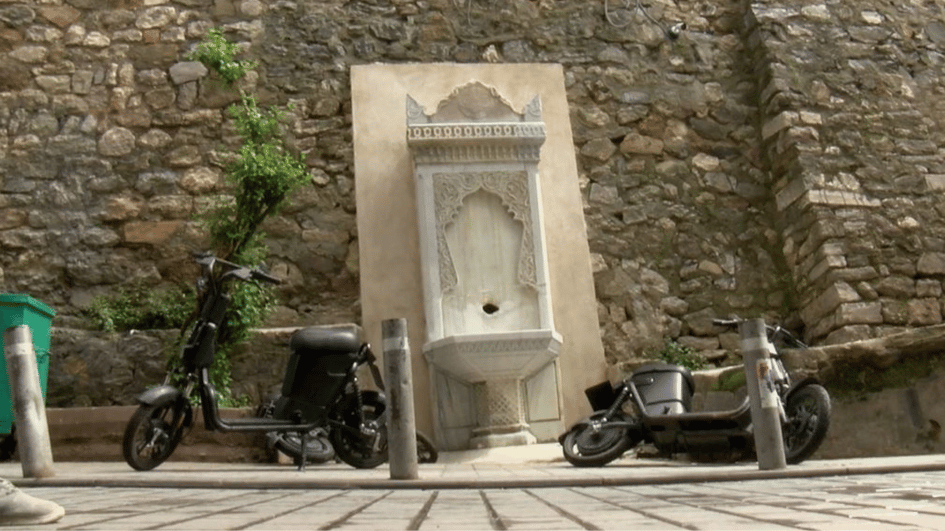Hüseyin Ruso to be laid to rest after 54 years
In the heart of the Turkish quarter of divided Nicosia, just behind the former printing works of the Halkin Sesi newspaper and the Dr. Fazil Küçük Museum, there is a small park. The “Tekke Bahçesi” is the final resting place of some Turkish Cypriots killed by Greek Cypriots between 1963 and 1974.
Before the 1974 Turkish intervention, the Tekke Bahçesi martyrs’ graveyard was the resting place of around 1,500 Turkish Cypriots. In 1977, the majority of their remains were exhumed at the request of their families and returned to their original villages and towns. Today, around 160 people are buried in the cemetery, some in graves marked “unknown.”
Most of the martyrs buried in the graveyard were civilians, resistance fighters and military personnel, killed in villages such as Küçük Kaymakli (Omorfita), Turkeli (Ayios Vasilos) and in the suburbs of Nicosia.
Resistance fighters killed during the Greek Cypriot attacks on Küçük Kaymakli under the command of Nicos Sampson were not immediately handed back to the Turkish side but dumped in mass graves using bulldozers. When the remains were exhumed and returned to the Turkish side, some bodies were difficult to identify, hence their burial in graves marked “unknown.”
No one should try to spin the sorrow of the people to gain a political advantage. Irrespective of whether the victim was a Greek Cypriot or a Turkish Cypriot, establishing the identity of bodies buried in mass graves or unmarked graves or at least determining under what conditions he or she spent their last moments should be a humanitarian obligation. For this reasons, efforts made by the bi-communal missing persons committee should be appreciated. Their task is both a painful and important one.
I have no idea why, but until recently permission was not given to excavate the “unknown” graves at the Tekke Bahçesi graveyard in order to establish the identities of the bodies and hand back the remains to their families. I was told that President Mustafa Akinci personally intervened to allow DNA tests to be carried out on the remains at Tekke Bahçesi. Good for him.
A few weeks ago, DNA tests identified the bodies of Kemal Goççino, Mehmet Goççino and Hüseyin Mustafa Vreççali. The heroes were laid to rest with full religious rites at the mosque of their hometown Küçük Kaymakli, which was subjected to Greek Cypriot occupation from Dec. 1963 until 1974. That is great news.
This week another piece of good news came in from the Turkish Cypriot wing of the Missing Persons Committee. DNA tests helped to identify the remains of local legend Hüseyin Ruso. Ruso was a sports teacher, a forward in the Küçük Kaymakli soccer team and a resistance fighter. When Greek Cypriots attacked on the night of Dec. 25, 1963, he courageously fought to his last bullet to preserve a key crossing to nearby Ortaköy. Küçük Kaymakli was evacuated, as were 102 other Turkish settlements.
Ruso deserves a full hero’s burial for sacrificing his life for his people.
Unfortunately, under the pretext of “avoiding hatred,” young Turkish Cypriots are hardly aware of who Ruso and the other heroes of Turkish Cypriot resistance were. Why did those people sacrifice their lives? Who was the Sampson who led the 1963 attacks on Turkish villages around Nicosia and why did he become president after the 1974 Greek Cypriot coup? Where was Greece in all those atrocities committed on Turkish Cypriots? Why for 11 years was the inscription “molon lave” (come and get it, if you can) written on the burned down walls of Küçük Kaymakli?
Ruso’s name was given to a secondary school in the liberated Küçük Kaymakli. I once asked the kids in the playground of that school if they knew who Ruso was. They did not know. I was shocked. I tried to explain to them who Ruso was. But a woman teacher yelled at me, saying I was poisoning the kids...
I am happy that Ruso will now finally rest in peace.











